Does your business pay contractors?

If your answer is “yes”, and last financial year your business made payments to contractors and subcontractors, for example cleaners, couriers, tradies and more, these payments must be reported in a Taxable Payments Annual Report (TPAR).
In the below post we’ll explore our top tips on TPAR, explaining all about the reporting process, what you need to report, how to do it and any other important information to note.
How do I know if I need to lodge TPAR?
If your business made payments to any contractors or subcontractors last financial year, then you do need to submit a TPAR report for that year.
What do I need to report?
Contractors and subcontractors for the TPAR fall into several categories. If you have made payments to contractors or subcontractors in industries providing the following services, you must report it:
- Building and construction services
- Cleaning services
- Courier services
- Road freight services
- IT services
- Security, investigation, and surveillance services
In your report, you must include information such as the total payment amount if an invoice you receive from a contractor includes both labour and materials.
The ATO is a hub for handy resources and offers a free reporting worksheet you can use to help you track payments throughout the year. Simply download the PDF and enter the details of payments to contractors for services. This sheet does not need to be submitted to the ATO — it’s for internal purposes only and will help you keep track and stay organised. However, you’ll need to refer back to it when it’s time to submit your TPAR so keep it in an easily accessible folder so you can find it when the time comes.
What don’t I need to report?
Some payments don’t need to be submitted in your TPAR. This includes:
- Payments for materials only
- Incidental labour
- Unpaid invoices after 30 June (only report payments you made on or before 30 June each year)
- Workers engaged under a labour-hire or on-hire arrangement
- Pay as you go (PAYG) withholding payments (don’t report payments to employees, report these payments through the PAYG withholding annual report or Single Touch Payroll)
- Payments to foreign residents for work performed in Australia (These are generally subject to PAYG foreign resident withholding. However, if the payments aren’t subject to PAYG withholding, then you need to report them in a TPAR.)
- Foreign residents for work performed overseas
- Contractors who do not provide an ABN — in this case, you may need to withhold an amount from the payment for that supply under the PAYG withholding arrangements
- Payments in consolidated groups
- Payments for private and domestic projects
Do I need to lodge a TPAR if my business provides taxable payment reporting system (TPRS) services and other unrelated services?
As of 1 July 2019, if your business provides both courier and road freight services, you must combine the payments you receive for both these services. Do this when you work out if you need to lodge a TPAR.
If TPRS services are only a portion of the services your business provides, you’ll need to determine what percentage of the payments you receive are for TPRS services each financial year, and if you need to lodge a TPAR.
This does not apply to building and construction services you provide.
If the total payments you receive for TPRS services are:
- 10% or more of your business income: you must lodge a TPAR
- less than 10% of your business income: you do not need to lodge a TPAR.
When do I need to report by?
The TPAR must be lodged by 28 August each year, so if you haven’t already done so, it’s time to get the wheels in motion and get reporting.
Even if you have no contractor payments, you must still lodge a Nil TPAR by the due date.
How do I lodge my TPAR?
Your TPAR report can be lodged directly to the ATO online through specific software. Sole traders and businesses can use business software if it is SBR-enabled software, or your business can create a TPAR data file to the required TPAR specifications. Simply lodge through online services for business using the file transfer function.
If you don’t have business software, use online services for business. To use this service, you need an ABN and a secure credential for myGovID and Relationship Authorisation Manager (RAM). Select Lodgements then Taxable Payments Annual Reporting.
You can also use:
- Online services for individuals and sole traders - select Tax, Lodgements, then Taxable Payments Annual Report
- Your tax or Business Activity Statements (BAS) agent
- Paper form – keep in mind if you choose to submit via this option, the ATO cannot process photocopies or scanned images of the form, and it must be posted to the ATO mailing address in NSW, so allow for delivery time to avoid missing the 28 August deadline.
Who can help me with TPAR?
Lodging your TPAR can be tricky, particularly if you pay a lot of different contractors or subcontractors over the course of a financial year. It’s important to stay organised, keep track of and record all your payments throughout the year, and engage the services of professional tax agents to get you through.
If you need guidance, get in touch with us well before August 28, and we can help lodge your business’s TPAR. Let's chat!
Need help with your accounting?








